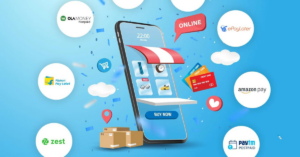Keeping churn rates low while building a customer base

“Skio helps brands on Shopify sell subscriptions without ripping their hair out,” explained Skio’s founder, Kennan Davison, when we sat down with him to understand how the product works, how it’s been growing to date and the challenges the company faces.
Skio launched in April 2021 with the goal of eliminating the hacky workarounds that other subscription apps have been using for Shopify. The company lets its clients employ native Shopify checkout along with a passwordless login to provide a seamless experience to their customers.
In the beginning, like many startups, Skio had to do things that don’t scale to acquire its first customers. Kennan would frequent direct-to-consumer communities on Twitter to find upset users of his competitor, ReCharge. After acquiring the first few customers, Skio created case studies to showcase how it improves the subscription process.
As the company began acquiring more customers, word-of-mouth helped the company show how much of an improvement Skio is over ReCharge (and other competitors). Considering the amount of inbound requests the company received to demo Skio, it’s clear it has product-market fit.
Now, Skio has over 100 recurring customers, including brands like Bev, Muddy Bites, Doe Lashes, Krave Beauty and more. The company has nearly zero churn, and it wants to keep it that way. To do that, the team’s goal is to continue acquiring users who are upset with their current subscription solution.
How can Skio continue growing this customer base while maintaining a low churn rate? That’s what we’ll explore in this article.
This post will share why some growth strategies are better than others, introduce growth concepts and explain our approach. The aim is to give you the insights necessary to pattern match a growth strategy to your own startup and begin applying the content right away.
Before we begin, here’s a quick look at Skio:
- Industry: E-commerce.
- Business model: Recurring subscriptions.
- Revenue source: SaaS fee + transaction fees.
- Price point: $399/month + 1% transaction fee + 20 cents.
Acquisition strategy
As previously mentioned, Skio’s target customers include current users of ReCharge, particularly those who aren’t happy with it. Skio charges a monthly subscription fee as well as a transaction fee.
To grow Skio’s revenue, we need to increase the total number of paying customers subscribed to its app. These customers must be low-churn risk, which means the most frustrated ReCharge customers are acquired before we target Shopify owners more broadly.
How to choose a growth strategy
There are three ways startups can acquire customers: inbound, outbound and viral.
Viral growth
Viral growth happens when awareness of a product is spread by customers using that product. Slack and TikTok are great examples of viral products, because users send invites to others to join, and the more users on the platform, the more valuable it is. Product-led growth and referrals are the most common viral-based acquisition strategies.
There are three key factors to consider when assessing if viral growth will work for your startup.
We’ll assess whether a viral growth strategy will work for Skio using a simple scoring method. Each factor will be given a rating of low, mid or high based on the likelihood of success.
Invitations: How many invitations will each user send to non-users?
For an invite to be relevant, Shopify store owners that use subscriptions will have to invite other Shopify store owners that use subscriptions. While founders tend to be well connected, it’s unlikely they will know enough people who fit that subscription for the number of invites sent to reach the critical mass required for viral growth.
Score: Low.
Conversion rate: What percentage of those invitations will convert someone into a new user?










